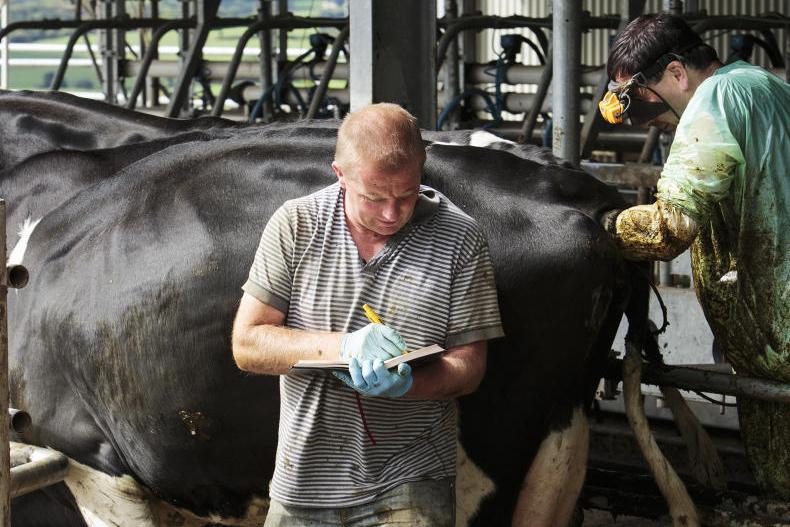The target is to breed 90% in the first 24 days. This is 90% of the herd, so it includes cows not yet calved or calved less than 30 days ago.
It’s easier to achieve this in herds that calved compactly, because the majority of cows in compact calving herds have had more than six weeks between calving and the start of breeding. This improves their likelihood of cycling and conception.
Problem cows are thin cows (body condition score 2.5 or less), late calvers and non-cyclers. The best treatment for thin cows is to put them on once-a-day (OAD) milking. At this stage, less than 6% of the herd should be thin. Putting these cows on OAD improves their condition score and farmer experience is that they start cycling and go back in calf much more easily as a result.
The best treatment for late-calving cows is time. Some farmers will put these on OAD also, to minimise BCS loss after calving, but at this stage, with grass plentiful and sun on their backs, BCS loss shouldn’t be too much of an issue.
Non-cyclers
Treating the non-cyclers is trickier. First you need to identify them early. Pre-breeding heat detection is the simplest and cheapest method. Paint all cows now, before the start of breeding, and top up cows with paint removed with a different colour once a week. Top up with the original colour on cows that don’t have paint removed. After three weeks, any cows with the original colour should be put on OAD milking or scanned. Some farmers will give all of these cows a blanket shot of PG and hope for the best.
Read more
Take early action with non-cycling cows for compact calving pattern
Special focus: spring AI
Dairy management: fertiliser
The target is to breed 90% in the first 24 days. This is 90% of the herd, so it includes cows not yet calved or calved less than 30 days ago.
It’s easier to achieve this in herds that calved compactly, because the majority of cows in compact calving herds have had more than six weeks between calving and the start of breeding. This improves their likelihood of cycling and conception.
Problem cows are thin cows (body condition score 2.5 or less), late calvers and non-cyclers. The best treatment for thin cows is to put them on once-a-day (OAD) milking. At this stage, less than 6% of the herd should be thin. Putting these cows on OAD improves their condition score and farmer experience is that they start cycling and go back in calf much more easily as a result.
The best treatment for late-calving cows is time. Some farmers will put these on OAD also, to minimise BCS loss after calving, but at this stage, with grass plentiful and sun on their backs, BCS loss shouldn’t be too much of an issue.
Non-cyclers
Treating the non-cyclers is trickier. First you need to identify them early. Pre-breeding heat detection is the simplest and cheapest method. Paint all cows now, before the start of breeding, and top up cows with paint removed with a different colour once a week. Top up with the original colour on cows that don’t have paint removed. After three weeks, any cows with the original colour should be put on OAD milking or scanned. Some farmers will give all of these cows a blanket shot of PG and hope for the best.
Read more
Take early action with non-cycling cows for compact calving pattern
Special focus: spring AI
Dairy management: fertiliser






 This is a subscriber-only article
This is a subscriber-only article









SHARING OPTIONS: